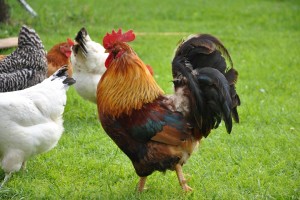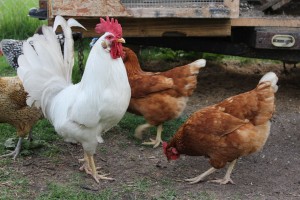A lot of farmers are struggling with the question of the best ratio to use for hens to roosters. The main reason for keeping roosters is for purposes of breeding. Others just keep them for the sake of it or to have a full ‘family’ of chickens. Proper integration of roosters into the flock can be quite beneficial to a farmer. The important question of how many roosters to keep for a given flock should be sufficiently explored. You will need to think about the types and size of your chicken coop and run. Here we offer the advice on the number of roosters you should keep per flock and what you need to know about roosters.
The ideal ratio of roosters to hens
Characteristically, a high number of roosters will require a large space and a huge number of hens as well. If you keep your poultry in a small area in your backyard, you won’t be able to keep more roosters than just a couple. You can only manage more if you keep them confined. This is mainly because the roosters can be quite noisy. When the morning comes and one rooster crows, the rest will follow suit. The noise they produce can reach unbearable levels.

A fully matured rooster can serve up to 16 hens. As it advances in age this number drops significantly. As you can see, the flock’s size plays a major role in the number of their male counterparts. If the number of roosters is sufficient, the chickens are not likely to fight and this ensures low rates of injury resulting from the fights. A number of people say that the rooster number need not exceed 10. However, this is influenced by the breed of the birds in question. For instance, the ratio of hens to roosters in Leghorns is 12:1, 6:1 for bantam Silkies and 4:1 for turkey. Averagely, the most suited ratio for most breeds should be kept at 4 hens for a single rooster. Even so, this ratio is still affected by the rooster’s breed. The danger of having many roosters for few hens is that the hens can be roughed up. This can be dangerous and unpleasant for the hens. The solution to this problem is to increase the number of hens.
The amount of space required by a single rooster
For your backyard, two roosters can easily be accommodated, irrespective of the system of raring you choose. However, space is vital since they guard their territories with a lot of jealousy. This can lead to constant fights if you end up with too many. Ensure that each rooster has its own territory to rule over. This will solve problems to do with fights ensuing from territories, ladies, and resources.

Benefits of roosters
The presence of a rooster in the flock affects the pecking order at first. This forms three levels of specific relationship levels. These are rooster to hens, hen to hen, and rooster to rooster relationships. The other benefit emanating from the introduction of a rooster in the flock is its behaviour. There are more peace, cohesion and focus brought about by the rooster in the flock. He looks for places with food, beckons the hens to come and eat. This whole time, he’s on the lookout for any lurking danger.
Conclusion
For the backyard, you should not at any time let a rooster stay with any number of hens less than four. The rooster is an added layer of security to the chicken that you are in no position to provide. Hence, ensure that the ratio of hens to roosters stay at 4:1.
